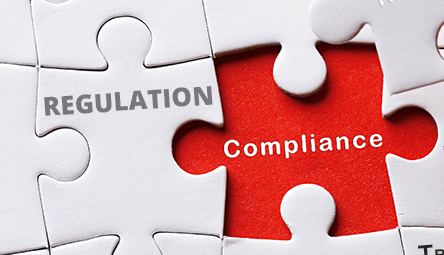How to Ensure HR Compliance in Chaotic Times
We are almost halfway through 2017, and, as expected, it is proving to be another challenging year for the HR professional.
Unemployment continues to fall, shrinking the pool of talent. Social changes have had a profound effect on the new generation of workers and what they expect from their employer. And the recent political turnover is creating a whirlwind of changes in government regulation.
HR compliance is no longer a simple, straightforward process.

Tighten Execution
Just open the paper this week for a prime example of the kind of uncertainty with which businesses are living. The Senate committee developing a healthcare plan to replace the Affordable Care Act (ACA) is working behind closed doors and isn’t even sharing the details with it’s Senate colleagues. That makes it pretty hard for HR professionals to make plans!
ADP Research Institute recently published the results of a survey of 756 business owners of midsized companies. Of those surveyed, 40% indicated that they had realized unexpected expenses from fines, penalties or lawsuits as a result of non-compliance with federal, state or local regulations in 2016.
This is likely to increase in the years ahead unless something changes. Tightening accountability around the HR compliance processes is now paramount.
Monitor Changes
As an HR professional, what can be done to prepare for whatever regulatory changes come your way?
Attention to these 5 areas is critical:
1. Understand What You Are Currently Offering
What do you offer your employees now? You will need to understand this as a baseline. Regular benefits and compliance audits should be performed to be sure that offerings are up to date.
2. Strengthen Accountability
Strengthen accountability in the HR department across the board. People involved in these audits, and in compliance in general, must feel that they will be held accountable for successful execution. Track individuals’ performance and tie it back to the employee review process.
3. Invest in Your Processes
Instead of losing sleep worrying about what the final regulatory changes will be, make investments and improvements in your employee benefits and compliance processes now. This will strengthen your position no matter what the legislative outcome.
Are your current compliance processes well documented and codified? Is your HR manual updated and clear? Do you have a compliance management system in place that will protect you from non-compliance surprises?
Invest in a checklist tool to ensure that no compliance steps fall through the cracks. Better yet, invest in a checklist tool that also integrates accountability at the individual level.
4. Think Through the Possible Scenarios
While it is futile to change processes before the legal reality changes, you can use the information you have to make some educated guesses.

It is impossible to define a complete list of scenarios, but establishing a range of scenarios allows management to evaluate the company strategy and the ease with which things can be adapted.
5. Communication is Key
Keep the HR staff updated on how you are planning for change. Once the regulatory change is enacted, update the written policies and procedures and spend the time to train and educate staff on compliance requirements.
Communicate expectations clearly to empower employees with the tools (e.g., checklists) they need to ensure compliance. Hold them accountable for execution at every stage.
At the End of the Day, Change Will Remain the Only Constant
HR compliance is a major challenge made more difficult by the ever increasing uncertainty of regulatory change.
Employers are subject to so many different laws at the federal, state, and local level, it is no surprise that many companies overlook legal changes and pay the price.
To reduce the likelihood of mistakes, strengthen your internal compliance monitoring and invest in tools that bolster execution, communication and performance.

CommandHound is a checklist tool that has been designed from the ground up to drive accountability to make sure things get done.
Would you like to learn more about how CommandHound is being used by HR professionals to manage change?
